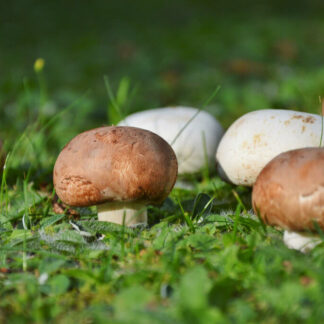Description
Origin
The cep of Bordeaux , its scientific name, Boletus edulis is a forest mushroom, excellent edible and harvested by amateurs with little danger of confusion with a toxic fungus. It grows in shady glades, and grows from summer to autumn. His biology, one of the most complex, does not allow man to control its development and even less its culture. It occupies a place of choice in the French gastronomy where the recipes are declined by hundreds. It would take its name from its massive presence in the markets of the city of Bordeaux. It is part of a very large genus of several hundred tube mushrooms, the Boletus . At xxi th century, phylogeny shows that its many varieties are species forming large clade of sensu lato edulis , one of which is that of edulis strict sense , now divided into a US branch and a European branch Cèpe where Bordeaux is located.
History
The Romans already consumed them, but the Latin word bōlētus included the Amanite of Caesars . Forgotten, it returns to the tables of gourmets noble than 1760, by a Polish king installed Lorraine 1 , then it reigns supreme in the Southwest since early xviii th century . Its natural cannery began around 1930, in a range including foie gras, snails or extra-fine green beans. Fresh cep of Bordeaux leaves his province only around the fifties. Today its consumption has taken a global scale.
Harvest and preparation
The cep of Bordeaux is harvested young – it is called champagne cork – or adult, but it becomes quickly the prey of worms. A small brush makes it possible to clean the remains of earth It is cut at the base of the foot, and deposited wedged in a basket to keep it airy. Climatic factors are decisive. The ceps of Bordeaux grow after a warm period interrupted by a heavy shower or a hail. They appear then after ten days. A small mushroom suckersometimes grow in the same place. It grows on slopes well exposed to the setting sun and well sheltered from the wind, especially if the period lacked sun, in the Ardennes for example. It does not grow often under the tree but in the firebreak, probably because it is drier under the tree and the mycelium is looking for its rootlets for the symbiotic association: mycorrhiza . The harvest begins about two weeks after that of the mushrooms of the meadows. Finally, take into account that they rarely grow alone. The cep of Bordeaux does not wash and does not peel. If it rolls it hurts and molds, in a plastic bag, it macerates and ferments, washed it swells and you will not keep them 5. Adult, it is necessary to remove the foam of the boletus which, if it is edible becomes spongy when cooking. The green tubes are easy to remove. Young, the ceps of Bordeaux are white and remain firm. Fresh, young and without strokes, they will keep all their flavor in the fridge for a week without breaking down.
The ceps of Bordeaux are poached a few minutes in a fat body, embellished or not with herbs, and then integrated into many recipes. Find the authenticity with our pan-fried Bordeaux mushrooms
The porcini mushrooms in the so-called “natural” preserves keep their firm texture and lose much of their taste. Indeed preserves natural are made from porcini preserved in the first place in the brine and it takes a long period of rinsing before canning.
Frozen, they lose less taste, but become spongy and lose a lot of water cooking.
Ceps can be dried in slices. find them on this site





